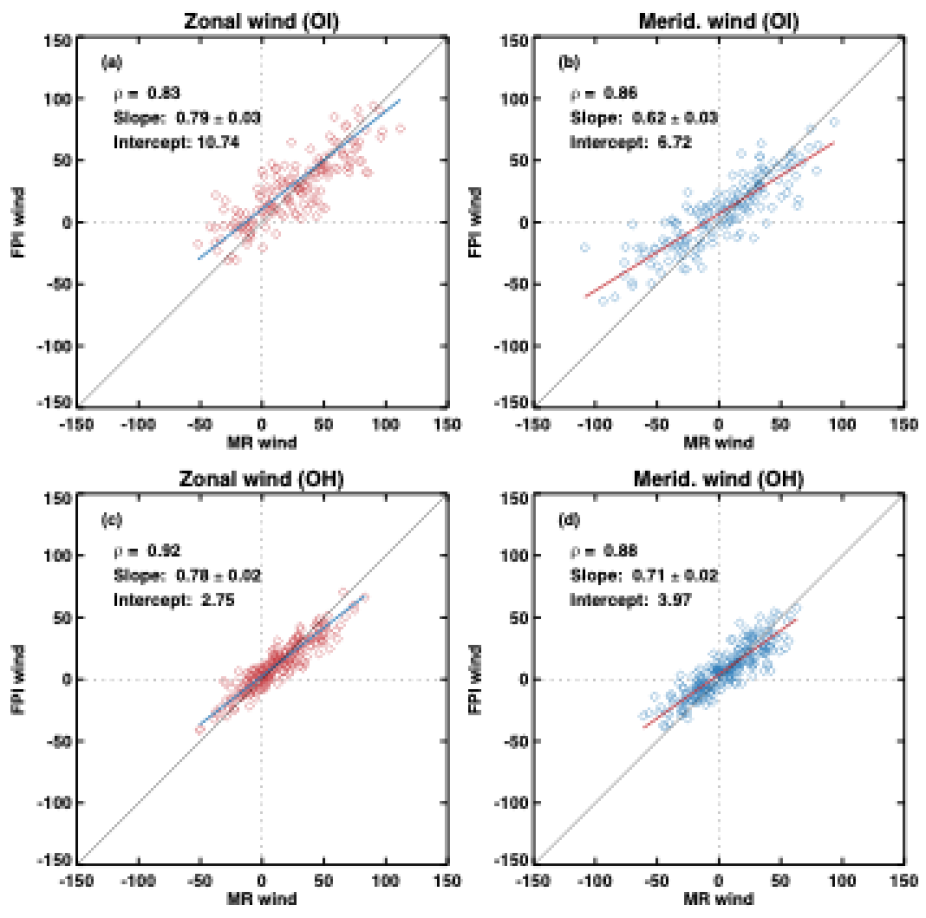Publication Name: JGR Space Physics; First HAO Author: Qian Wu; Authors as listed in article: Changsup Lee, Geonhwa Jee, Hosik Kam, Qian Wu, Young-Bae Ham, Yong Ha Kim, and Jeong-Han Kim
The neutral winds in the Mesosphere and Lower Thermosphere (MLT) region have been observed at King Sejong Station, Antarctica using a meteor radar and a Fabry-Perot interferometer (FPI) simultaneously. These two independent MLT wind measurements are compared to each other to identify the characteristics of FPI measurement. Instead of using a fixed emission height for FPI winds, for the first time, we consider the temporal variations of airglow emission layer in association with corresponding meteor height distributions for more accurate comparison between the FPI and meteor radar winds.

Scatterplots of hourly mean zonal and meridional wind components at OI layer (a, b), OH layer (c, d) measured by the FPI and MR in 2017 and 2019, respectively. The 2-year averaged correlation coefficients (ρ), linear slopes and intercepts are presented on each scatterplot. The colored solid line denotes the regression line of FPI against MR winds. The black solid line shows the line of equality.
The temporal variations of the airglow emission layers are examined from the inverse relationship between the height integrated emission rate and the peak emission height derived from the TIMED/SABER observations. It is found that FPI winds are consistently smaller than meteor radar winds and the discrepancy becomes larger for OI emission at higher altitude, which may be related to large wind shear in the MLT region and variabilities of the emission layers. Finally, we found that the FPI can provide reliable height-averaged winds in the MLT region where existing a strong wind shear from this simultaneous MR wind measurements.